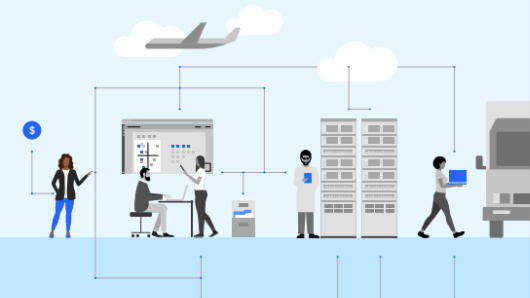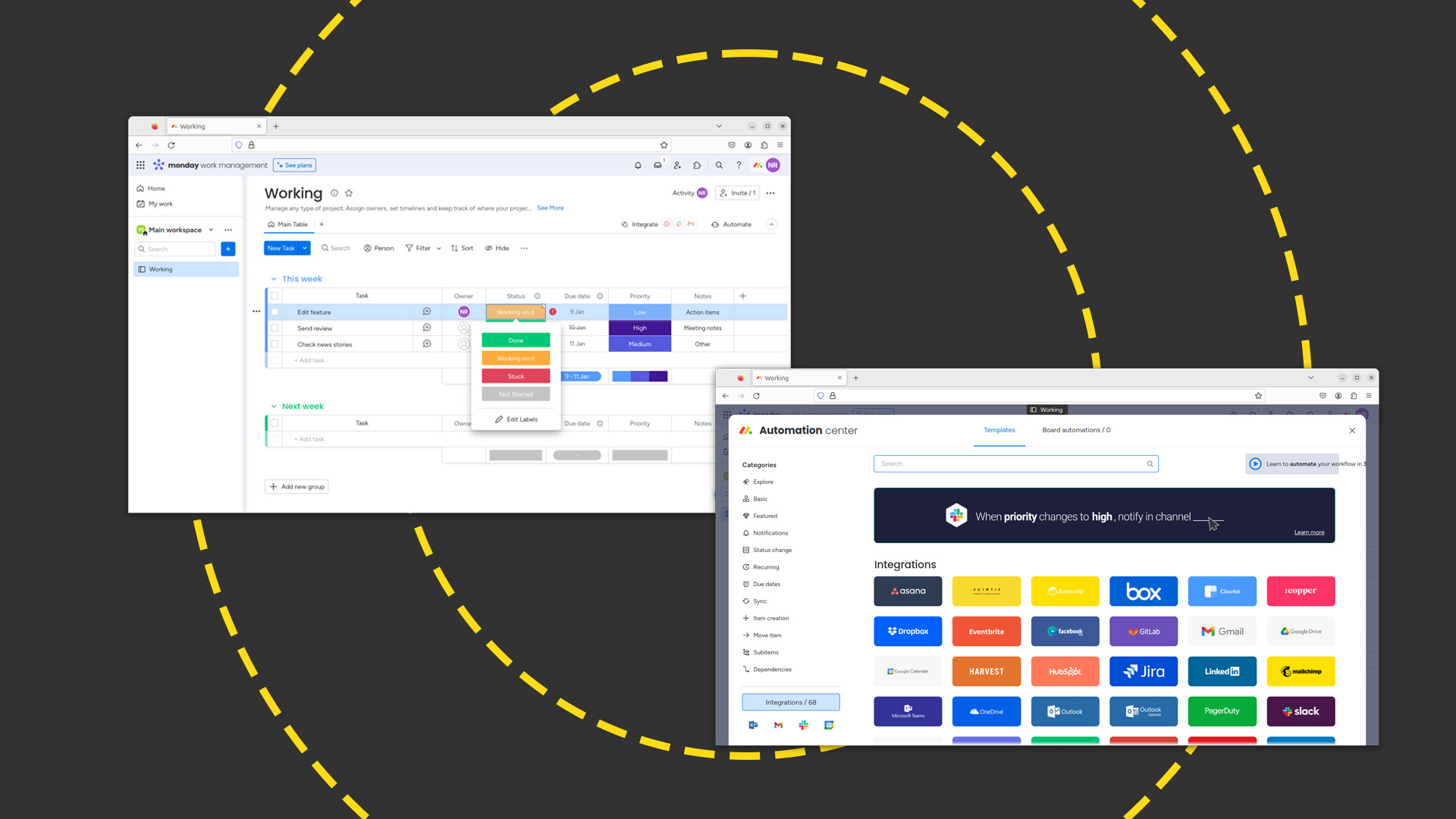What is technical debt and how can businesses tackle it?
Putting off essential upgrades can lead to a build-up of technical debt, and spiralling costs down the line


Stephen Pritchard
Businesses need their technology to be in tip-top condition and free of technical debt if it’s to function in the most efficient way possible and not hold them back. Having the most effective technology is more important than ever in the midst of a financial squeeze, but technical debt throws a major spanner into the works.
Related link: How the cost of living crisis will savage tech
Technical debt often gets thrown around in general conversations about an organization’s IT capabilities, but specifically refers to technology that holds an organization back. It can exist anywhere throughout the IT estate and can apply as much to the fulfillment side of the business as it can to the management side – in areas such as payroll, HR, or recruitment technologies. Actual instances of technical debt will vary from business to business, but wherever it lies, and whatever it is or isn’t doing, identifying technical debt – and removing it – should be a key priority.
What is technical debt?
Often used in software development, technical debt is one of the most dreaded concepts in IT. The term is used to reference the cost of future work that might be needed to upgrade or maintain software that’s falling out of date. It was coined to describe software that might cost more to run or be less effective the longer it’s in use. Much like actual debt, failing to tackle technical debt results in interest accruing over time, like a ballooning credit card bill.
All kinds of software can suffer, including in-house applications as well as software developed by huge vendors such as Microsoft, SAP, and Oracle, to name a handful. The problem is often some combination of not spending appropriate amounts of money or employing shortcuts, as well as inadequate software testing, temporary patches or workarounds that become permanent, and other poor development practices. The software may not be on the verge of failing, but it’s not serving its purpose to the fullest extent.
Although most of the time technical debt might accrue due to poor or rushed development, sometimes IT teams are in the dark over the problems – and might not notice technical debt creeping into the IT estate. Users might, for example, start to find application performance is suffering, but might not have a way to relay this to the development team. If left unfixed and unaddressed, the issues may become permanent fixtures of the software in question.
How does technical debt change over time?
Technical debt is not a fixed, constant thing. It manifests differently over time. Indeed, what might have been state of the art once – maybe even just a couple of years ago – may be an anchor weighing a business down today. The pace at which technology develops means firms need to be constantly vigilant so that they can stay ahead of the specter of technical debt and, if they are able, stop it before it occurs.
RELATED RESOURCE

IDC: The business value of IBM Maximo
Integral to the transformation of asset management
DOWNLOAD FOR FREE
“Five years ago, organizations with on-premises centered architectures broadly might not have been described as in technical debt,” business strategist and founder of Radbourne Consulting, Christy Kulasingam, tells IT Pro, for example. “In today’s heavily cloud-centric world, however, legacy on-premises solution stacks often lack operational agility.”
Get the ITPro daily newsletter
Sign up today and you will receive a free copy of our Future Focus 2025 report - the leading guidance on AI, cybersecurity and other IT challenges as per 700+ senior executives
But a digital transformation exercise that’s moved a firm to the cloud still needs to be constantly working to identify and address technical debt. As Kulasingam puts it: “No organization – even well-capitalized ones like Apple, Google, or Microsoft – will be able to commit resources to keep all their technology debt-free.
“As much as you can plan to maintain up-to-date coding and practices and remain as vigilant as possible to changes, there will always be unforeseen eventualities, changes to business requirements, or emerging technologies that can quickly create technical debt.”
Avoiding the false economy
Research published last year by Forrester advised IT teams to focus on tackling technical debt well in advance of an expected economic downturn.
The financial squeeze has come along, as predicted, with rising energy costs and inflation contributing to many biting financial issues. This has caused a number of difficulties, with businesses redirecting technical and strategic bandwidth to budget cutting – cutting costs on cloud or reducing cyber security costs, for example – while teams are also required to ensure they’ve properly budgeted for tech projects during the economic unrest.
As such, businesses may well be wondering whether tackling technical debt now – if they missed the boat previously – is something they should be prioritizing over other areas of cost savings or general digital transformation. Jaco Vermeulen is CTO of BML Digital, and has been portfolio/interim CIO at the likes of Park Holidays, CignPost, and the Post Office. Not tackling technical debt, he tells IT Pro, can be a false economy.
“[Technical debt can] add complexity, visible in the fact that it gets harder and harder to support legacy systems,” he says. “This, in turn, adds maintenance and support overheads and means the business cannot adopt standardization. Ongoing complexity creates user confusion, and this then creates even more additional costs.”
Seen through this lens, technical debt is a vicious spiral that can lead, ultimately, to spend ever more time, effort, and money on propping up technology that’s not able to perform optimally. The money spent on maintaining this debt, therefore, is money kept from being spent on other areas of the business.
Is it ever a good idea to walk away from technical debt?
Odd though it might sound, inaction is sometimes the best choice, despite concerns over the false economy of not tackling technical debt, as Vermeulen raises. In the context of both the current financial challenges and a recognized need to tackle technical debt, there will still be some instances where it might be sensible not to address some issues.
“Whilst having no technical debt would be ideal, going back and refactoring all of your technology stacks – that support your portfolio of products or services – is just not realistic,” Kulasingam points out. “A balance is required between getting new products out to market at speed and maintaining existing ones with regular reviews to manage existing technical debt and prevent worsening from occurring that could negatively impact purchasing decisions.”
RELATED RESOURCE

Adopting this strategy doesn’t mean turning a blind eye, however. It just means analyzing technical debt across the whole business, understanding the costs where a “do nothing” decision is made, setting out a roadmap for every instance of technical debt, and revisiting this regularly to reprioritize or add more resources where it seems possible or necessary.
Vermeulen offers some practical examples. “If the cost, effort, and disruption of change would be too great, or if the cost of keeping the debt is so insignificant that it can be retained,” he says. “So legacy mainframe financial services or pricing solution platforms might be deemed technical debt in a modern MACH-based [microservices based, API-first, cloud-native SaaS and headless] technology landscape and approach. However, mainframes are stable, so they persist and modernized solutions are created around them.”
Countering technical debt when finances are squeezed
Even though are occasions when technical debt instances could be left in place, doing so needs to factor into account the effects on both capital expenditure and operational expenditure. There will almost certainly be impacts on one or both of these, and the business needs to acknowledge this and know the degree of effect it can handle.
“Technical debt is likely to cost more than contemporary solutions in licensing, support, development, extendibility, and processing or hosting,” Vermeulen says. He adds that businesses will benefit from being forward-looking, even at times when finances are squeezed. “A big constraint is that far too often business cases and change investment decisions are limited in requiring short-term return instead of strategic long-term benefit,” he continues. “Therefore, technical debt persists because it’s involved in long-running projects and the associated costs of change will only deliver value from a strategic perspective.”
Ultimately, then, if technical debt is identified and can be addressed, the best option is likely to be to tackle it as early as possible – and the second best is to put it on the roadmap. The longer technical debt lingers, the more it can hold a business back and lead to greater costs in the future. Whether the economic climate is rosy or challenging, no business wants to fall behind its competitors, especially when it can do something about it.

Sandra Vogel is a freelance journalist with decades of experience in long-form and explainer content, research papers, case studies, white papers, blogs, books, and hardware reviews. She has contributed to ZDNet, national newspapers and many of the best known technology web sites.
At ITPro, Sandra has contributed articles on artificial intelligence (AI), measures that can be taken to cope with inflation, the telecoms industry, risk management, and C-suite strategies. In the past, Sandra also contributed handset reviews for ITPro and has written for the brand for more than 13 years in total.
-
 Bigger salaries, more burnout: Is the CISO role in crisis?
Bigger salaries, more burnout: Is the CISO role in crisis?In-depth CISOs are more stressed than ever before – but why is this and what can be done?
By Kate O'Flaherty Published
-
 Cheap cyber crime kits can be bought on the dark web for less than $25
Cheap cyber crime kits can be bought on the dark web for less than $25News Research from NordVPN shows phishing kits are now widely available on the dark web and via messaging apps like Telegram, and are often selling for less than $25.
By Emma Woollacott Published
-
 More than half of UK enterprises regret at least one software purchase – here’s how to prevent buyer’s remorse
More than half of UK enterprises regret at least one software purchase – here’s how to prevent buyer’s remorseNews More than half of UK enterprises regret at least one software purchase they've made in the last 18 months.
By Emma Woollacott Published
-
 Zellis snaps up AI-powered HR software firm elementsuite
Zellis snaps up AI-powered HR software firm elementsuiteNews Elementsuite will be integrated with Zellis’ own payroll and HR software offering
By Daniel Todd Published
-
 ‘SaaS dependency’ is becoming a major issue for tech leaders
‘SaaS dependency’ is becoming a major issue for tech leadersNews The survey highlighted issues around maintenance, innovation, and data
By Emma Woollacott Published
-
 Monday.com review: Work management platform works best when you pay for it
Monday.com review: Work management platform works best when you pay for itReviews The versatile 'Work OS' skilfully balances power, flexibility, and ease of use
By Nik Rawlinson Published
-
 How big is the Windows 10 cliff-edge?
How big is the Windows 10 cliff-edge?ITPro Network With some comparing the upcoming Windows 10 end of life to Windows XP, we ask members of the ITPro Network for their insight
By Jane McCallion Published
-
 Rolls-Royce is empowering citizen developers through Power BI
Rolls-Royce is empowering citizen developers through Power BICase Study The rise in employee-led development communities have the power to exceed any CIO’s expectatons
By Rory Bathgate Published
-
 New Microsoft Teams features for business users
New Microsoft Teams features for business usersIn-depth All the latest Microsoft Teams features after the platform is given a redesign, complete with an AI-powered assistant and a faster engine
By Danny Bradbury Published
-
 Oracle’s Java subscription changes spark concerns over cost hikes for smaller businesses
Oracle’s Java subscription changes spark concerns over cost hikes for smaller businessesNews Smaller businesses could incur significant cost hikes as high as 1,400% with most new customers expected to pay at least double
By Ross Kelly Published